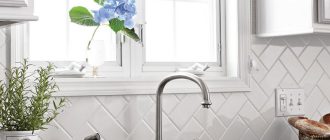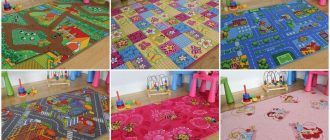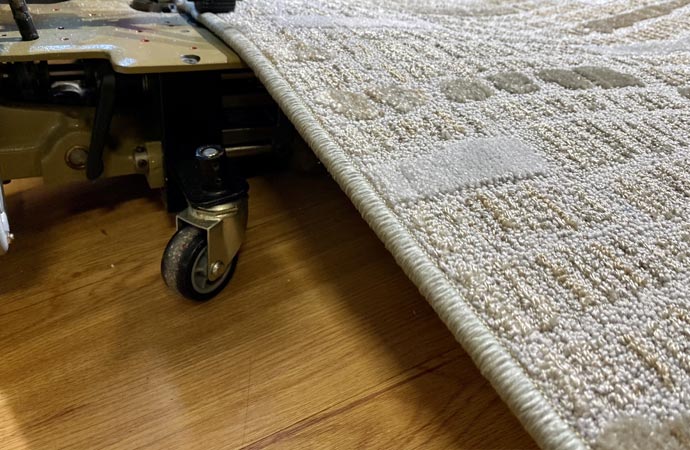
Area Rug Finishes: Rug Binding, Serging, and Fringing
Are you looking to add that perfect finishing touch to your rug? Look no further! At Rug Master, we offer a wide range of finishes to suit all your needs. Whether you’re looking for durability, elegance, or a combination of both, we’ve got you covered.
Rug Binding: Binding is a great choice for those looking for a clean and polished edge. It involves wrapping a fabric or tape around the edges of the rug, securing it in place and preventing fraying. This finish not only adds a professional look but also extends the lifespan of your rug.
Serging: Serging is a beautiful and traditional finish that adds a touch of luxury to any rug. It involves wrapping yarn or thread along the edges of the rug, creating a tightly woven border. This finish not only prevents fraying but also adds a decorative element that enhances the overall appearance of your rug.
Fringing: Fringing is a timeless finish that adds a touch of elegance to any rug. It involves securing individual strands of yarn to the edges of the rug, creating a cascading effect. This finish not only adds visual interest but also allows for easy customization, as you can choose the length and style of the fringes.
With our wide range of finishes, you can create a rug that is not only beautiful but also tailored to your specific needs and preferences. So why wait? Visit Rug Master today and discover the perfect finish for your rug!
Why Choose Area Rugs?
Area rugs are an essential part of any home decor. They come in a variety of finishes, including rug binding, serging, and fringing, that add a touch of beauty and elegance to your space.
1. Versatile Design Options: Area rugs allow you to add a pop of color, pattern, or texture to any room. With a wide range of designs, you can find the perfect rug to complement your existing furniture and decor.
2. Enhanced Comfort: Area rugs provide a comfortable and cozy surface for your feet. Whether you choose a plush shag rug or a flat-woven rug, the softness underfoot will make your living space more enjoyable.
3. Noise Reduction: Area rugs can help absorb sound and reduce noise levels in your home. Whether you have hardwood floors or tile, adding an area rug can make a noticeable difference in the acoustics of your space.
4. Protection for Floors: Area rugs act as a protective barrier between your furniture and the floor. They can help prevent scratches and damage, especially in high-traffic areas. Additionally, they can help preserve the beauty of your hardwood floors or tile.
5. Easy Maintenance: Area rugs are generally easier to clean and maintain compared to wall-to-wall carpeting. Most rugs can be vacuumed or spot cleaned as needed. Regular maintenance will keep your rug looking fresh and extend its lifespan.
6. Quick and Affordable Updates: If you’re looking to update the look of a room without completely redecorating, an area rug is the perfect solution. It’s a cost-effective way to refresh your space and change the overall feel of a room.
Choose area rugs for their finishes, such as rug binding or serging, and enjoy the numerous benefits they offer. Whether you’re looking to add style, comfort, or protection to your home, area rugs are a perfect choice.
Types of Area Rug Finishes
When it comes to area rugs, the finishing details can make a big difference in both the appearance and durability of the rug. There are several common finishes that can be applied to area rugs to give them a polished look and prevent fraying or unraveling. Here are three popular types of area rug finishes: serging, rug binding, and fringing.
Serging
Serging is a type of finishing technique that involves wrapping the edges of a rug with yarn or thread. This creates a neat and finished look, while also preventing the edges from fraying or unraveling. Serging is a popular choice for area rugs made of natural fibers like wool or cotton.
Rug Binding
Rug binding is another method of finishing the edges of an area rug. It involves sewing a wide fabric binding along the edges of the rug to protect them from wear and tear. Rug binding can be done in a variety of materials, such as cotton, nylon, or polyester. This finish provides a clean and tailored look to the rug.
Fringing
Fringing is a classic and decorative finish for area rugs. It involves adding long threads or strands of yarn to the edges of the rug, creating a fringe effect. Fringing can be done in a variety of styles, from short and neat to long and tasseled. This finish adds an elegant and traditional touch to the rug.
When choosing a finish for your area rug, consider the style and material of the rug, as well as your personal preferences. Each finish has its own unique look and benefits, so you can choose the one that best suits your needs and complements your home décor.
Rug Binding
Are you looking for a way to give your area rug a polished and finished look? Look no further than rug binding! Rug binding is the perfect way to add a professional touch to any rug, making it not only more visually appealing but also more durable and long-lasting.
What is rug binding?
Rug binding is a process in which the edges of an area rug are finished with a binding tape or a fringe. This helps to prevent fraying and unraveling of the rug, ensuring that it remains in pristine condition for years to come.
Why choose rug binding?
There are several benefits to choosing rug binding for your area rug. Firstly, it adds a finished look to your rug, giving it a more polished and professional appearance. Secondly, it helps to extend the lifespan of your rug by preventing fraying and unraveling. Lastly, rug binding can also help to protect the edges of your rug from wear and tear, keeping it looking beautiful for longer.
Types of rug binding finishes
There are several different types of rug binding finishes to choose from, depending on your personal style and preferences. These include:
-
Binding tape: This is a type of fabric tape that is stitched onto the edges of the rug, providing a clean and neat finish.
-
Fringe: Fringing is another popular rug binding finish, where a fringe is added to the edges of the rug, giving it a decorative and elegant look.
How to choose the right rug binding finish
When choosing a rug binding finish, consider the style and design of your rug, as well as your personal taste. Binding tape is a great choice for modern and contemporary rugs, while fringing can add a touch of luxury and tradition to more classic or vintage designs.
Conclusion
Rug binding is a fantastic way to add a professional and finished look to your area rug. Whether you choose binding tape or fringing, this finishing touch will not only enhance the appearance of your rug but also extend its lifespan. So why wait? Give your rug the perfect finishing touch with rug binding today!
Serging
Serging is one of the popular area rug finishes that adds a neat and finished look to the edges of the rug. It involves sewing a narrow ribbon-like binding, typically made of yarn or thread, along the raw edges of the rug. This technique prevents the edges from fraying and gives the rug a clean and polished appearance.
Here are some key points to know about serging:
- Prevents fringing: Serging helps to prevent fringing or unraveling of the rug’s edges, extending the lifespan of the rug.
- Enhances durability: The serged edges provide extra reinforcement to the rug, making it more resistant to wear and tear.
- Available in various colors: Serging can be done using yarn or thread in different colors, allowing you to match the binding with the rug’s design or create a contrasting border for a unique look.
- Creates a clean finish: The even and tightly sewn binding gives the rug a polished and professional finish.
Whether you have a handmade oriental rug or a machine-made area rug, serging is a popular and effective way to finish off the edges. It provides both functional and aesthetic benefits, adding a touch of elegance to your space.
At [Your Company Name], we offer professional serging services for area rugs. Our skilled craftsmen can help you choose the perfect binding and create a finished edge that complements your rug’s design. Contact us today to learn more about our serging options and how we can enhance the beauty and longevity of your area rug.
Fringing
Fringing is a decorative finish that adds a touch of elegance to your rug. It involves attaching a fringe to the edges of the rug, creating a beautiful and classic look.
With fringing, your rug will have a finished edge that not only enhances its appearance but also helps protect it from unraveling or fraying. The fringe is typically made from the same material as the rug, ensuring a seamless and cohesive design.
There are different types of fringes available, including hand-knotted fringes, machine-made fringes, or even custom fringes that match your specific design preferences. You can choose a fringe color that complements the colors in your rug or opt for a contrasting color for a bold statement.
In addition to aesthetics, fringing also provides functional benefits. The fringe can act as a natural border for the rug, making it visually distinct from the surrounding floor. It can also help prevent the rug from sliding or shifting, providing a safer and more secure surface.
If you’re considering fringing for your rug, it’s essential to work with professionals who specialize in rug finishes. They have the skills and expertise to ensure that the fringe is properly attached and secured, guaranteeing a high-quality and long-lasting finish.
Overall, fringing is an excellent choice for adding a sophisticated and refined look to your rug. Whether you have a traditional or contemporary design, fringing can bring out the best in your rug and elevate the overall aesthetic of your space.
Rug Binding
Add a finished touch to your area rug with rug binding. Rug binding is a process that helps to prevent the edges of your rug from fraying over time. It involves attaching a binding material, such as fabric or leather, to the edges of your rug to create a clean and polished look.
Rug binding not only adds a stylish and professional finish to your rug, but it also helps to protect the edges from wear and tear. By securing the edges of your rug, binding can prolong the life of your rug and prevent it from unraveling.
At our rug binding service, we offer a variety of binding options to suit your style and preferences. Whether you prefer a contrasting binding color for a bold and eye-catching look, or a matching binding color for a subtle and seamless finish, we have got you covered.
Our team of experts is skilled in the art of rug binding and can provide high-quality binding services for any size or shape of rug. We take pride in our attention to detail and craftsmanship, ensuring that your rug is finished to perfection.
Don’t let the edges of your rug go unprotected. Choose rug binding to add the final touch of elegance and durability to your area rug. Contact us today to learn more about our rug binding services and to schedule an appointment.
What is Rug Binding?
Rug binding is the process of finishing the edges of an area rug by wrapping them with a fabric or tape to prevent fraying and give the rug a clean, polished look. It is one of the most common finishes used in rug manufacturing and is popular among both manufacturers and consumers.
During the rug binding process, a strip of fabric or tape is sewn or glued to the edges of the rug, creating a durable and attractive finish. This helps to protect the rug from wear and tear, as well as prevent the threads from unraveling over time.
There are different types of rug binding that can be used, depending on the desired look and functionality. Some popular options include:
- Traditional binding: This involves sewing a fabric strip to the edges of the rug with a matching thread, resulting in a clean and precise finish.
- Wide binding: This method uses a wider fabric strip to create a more noticeable border around the rug, adding a decorative element to the design.
- Tape binding: Instead of sewing, a strong adhesive tape is used to attach the fabric strip to the edges of the rug. This is a quicker and less expensive option, but may not be as durable as traditional binding.
Rug binding is often confused with serging and fringing, which are other popular finishes used in rug manufacturing. Serging involves wrapping the edges of the rug with a yarn or thread, while fringing creates a decorative fringe along the edges of the rug.
In conclusion, rug binding is a crucial step in the rug manufacturing process that helps to enhance the durability and appearance of an area rug. Whether you prefer traditional binding, wide binding, or tape binding, this finishing technique can add the perfect touch to your rug and protect it for years to come.
Benefits of Rug Binding
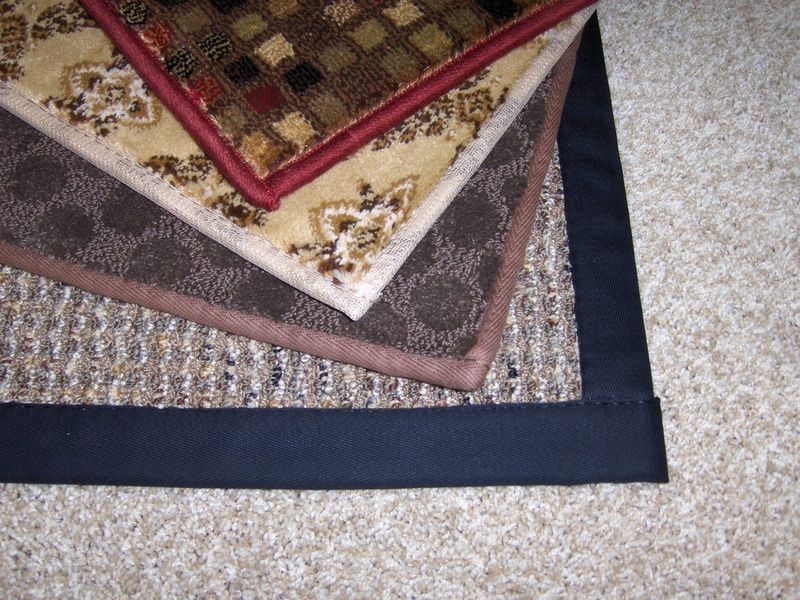
Rug binding is one of the popular finishes for area rugs. It involves wrapping the edges of the rug with a durable binding material, which not only enhances the overall appearance of the rug but also provides a number of practical benefits.
1. Enhanced Durability: Rug binding helps prevent the edges of the rug from fraying or unraveling over time. By securing the edges with a strong binding material, the rug is less prone to damage, ensuring its longevity.
2. Improved Appearance: Binding adds a neat and finished look to the edges of the rug. It gives a polished and professional appearance to the rug, making it more visually appealing.
3. Easy Maintenance: Rug binding simplifies the cleaning and maintenance process. The bound edges make it easier to vacuum the rug, as there are no loose threads or fringes to get caught in the vacuum cleaner.
4. Versatility: With rug binding, you have the flexibility to choose from a variety of binding materials, colors, and styles. This allows you to customize the rug and match it with your existing decor, creating a seamless integration.
5. Safety: Rug binding eliminates the risk of tripping over loose threads or fringes. The bound edges create a smooth and secure surface, ensuring safety for everyone, especially in high-traffic areas.
6. Cost-Effective: Rug binding can be a cost-effective alternative to other finishes like fringing or serging. It provides similar benefits at a more affordable price, making it a popular choice for many rug owners.
Overall, rug binding is a practical and aesthetically pleasing finish option for area rugs. Its durability, improved appearance, ease of maintenance, versatility, safety, and cost-effectiveness make it a highly recommended choice for rug enthusiasts.
Rug Binding Process
Rug binding is a popular finishing technique used to give area rugs a neat and polished look. It involves sewing or gluing a fabric or tape onto the raw edges of the rug to prevent fraying and add durability.
There are several advantages to rug binding:
- Preventing Fraying: Binding the edges of the rug prevents the threads from unraveling, extending the life of your rug.
- Enhancing Appearance: Binding adds a decorative edge to your rug, complementing its design and giving it a finished look.
- Adding Durability: The binding process reinforces the edges of the rug, making it more resistant to wear and tear.
The rug binding process typically involves the following steps:
- Preparing the Rug: The edges of the rug are trimmed, ensuring a clean and straight line for binding.
- Choosing the Binding Material: There are various materials available for binding, such as cotton, leather, or synthetic fabric tapes. The choice depends on personal preference and the desired look.
- Measuring and Cutting: The binding material is measured and cut to the appropriate length, allowing for a slight overlap at the corners.
- Attaching the Binding: The binding material is either sewn or glued onto the edges of the rug, securing it in place.
- Trimming and Finishing: Any excess binding material is trimmed, and the corners are mitered or rounded for a clean and professional finish.
Overall, rug binding is an excellent way to protect and enhance your area rugs. It provides a polished look while preventing fraying and increasing durability. Whether you choose sewn or glued binding, this finishing technique will add value to your rug and make it a long-lasting investment.
Serging
Serging is one of the finishes used in the area rug industry to give rugs a polished and professional look. It involves wrapping the edges of a rug with yarn or thread to prevent fraying and provide a clean finish.
Here are some key points to know about serging:
- Prevents fraying: Serging helps to protect the edges of the rug from fraying, keeping it in good condition for longer.
- Enhances durability: The serged edges add an extra layer of reinforcement, making the rug more durable and resistant to wear and tear.
- Various color options: Serging can be done using different colors of yarn or thread, allowing for customization to match your rug’s design or decor.
- Clean and neat finish: The serging technique creates a clean and polished edge that adds a professional touch to the rug.
- Commonly used in binding: Serging is often used as an alternative to binding, especially for rugs with thicker pile or irregular shapes.
Overall, serging is a popular finishing technique in the area rug industry that enhances the appearance and durability of rugs. It provides a clean and neat finish while preventing fraying, making it a great choice for rugs of all types.
What is Serging?
Serging is a finishing technique often used on area rugs to prevent fraying and add durability. It involves wrapping the edges of the rug with a tightly wound yarn or thread, creating a neat and polished look.
This technique is similar to rug binding, but the main difference is in the appearance. Serging creates a more decorative and elegant finish, giving the rug a subtle border. It is often used on higher-end rugs or those with intricate designs to enhance their overall aesthetics.
Serging can be done with various materials, including wool, cotton, or synthetic fibers, depending on the desired look and durability. It can also be customized to match the color scheme of the rug, creating a cohesive and visually appealing design.
Here is a simple step-by-step guide on how serging is done:
- Trim the edges of the rug to ensure a clean and straight edge.
- Select a yarn or thread that complements the rug’s color and texture.
- Secure the yarn or thread to the backside of the rug, near one corner.
- Wrap the yarn or thread tightly around the edge of the rug, perpendicular to the surface. Repeat this process for each side of the rug.
- When reaching the corners, make mitered cuts to create a smooth and professional look.
- Continue wrapping and securing the yarn or thread until all edges are covered.
- Secure the end of the yarn or thread to the backside of the rug with a knot or adhesive.
- Trim any excess yarn or thread for a clean finish.
By adding serging to an area rug, you not only protect its edges from fraying but also enhance its overall appearance. Whether you have a traditional rug or a modern design, serging can be a beautiful finishing touch that adds a touch of elegance and sophistication.
Benefits of Serging
Serging is one of the finishes used for area rugs. It involves wrapping the edges of the rug with thread to create a clean and durable finish. Here are some benefits of choosing serging for your rug:
- Enhanced Durability: Serging reinforces the edges of the rug, preventing fraying and unraveling over time. This ensures that your rug will last longer and stay in good condition.
- Neat and Finished Look: The serged edge gives your rug a polished and professional appearance. It adds a decorative element to your rug and enhances its overall aesthetics.
- Customizable Options: Serging offers a range of customization options in terms of color and thickness of the thread used. You can choose a thread color that matches or complements the colors in your rug, allowing you to create a unique and personalized look.
- Easy Maintenance: Serging makes it easier to maintain and clean your rug. The finished edges help to prevent dirt and debris from getting trapped along the edges, making vacuuming and cleaning a breeze.
- Prevention of Tripping Hazard: Serging helps to keep the edges of your rug flat and prevents them from curling up, reducing the risk of tripping or slipping on the rug.
Overall, serging is a great option for finishing your area rug. It not only enhances the durability and aesthetics of the rug but also makes it easier to maintain and keep clean.
Serging Techniques
If you are looking for a beautiful and durable finish for your area rug, serging is the perfect choice. Serging is a technique used to bind the edges of a rug, creating a clean and polished look. It prevents the edges from fraying or unraveling, increasing the lifespan of your rug.
There are different serging techniques that can be used depending on the style and design of your rug. Here are some popular serging techniques:
- Overlocking Serging: This technique uses a thread that matches the color of your rug to create a seamless and inconspicuous finish. It provides a neat and tidy look, perfect for modern and minimalist rug designs.
- Wide Whipstitch Serging: This technique involves using a contrasting thread color to create a decorative border around the edges of your rug. It adds a touch of elegance and can complement traditional or vintage rug designs.
- Narrow Binding Serging: This technique involves using a narrow binding tape to secure the edges of your rug. It creates a clean and sleek finish, allowing the focus to be on the design and pattern of the rug.
Regardless of the serging technique you choose, it is important to select a skilled and experienced rug finisher to ensure high-quality results. At our company, we have a team of experts who specialize in various serging techniques, ensuring that your rug receives the perfect finish.
Investing in a serged area rug allows you to enjoy its beauty and functionality for years to come. Whether you prefer a traditional, modern, or eclectic style, serging is a versatile and durable finishing option that will enhance the overall look and feel of your rug.
Contact us today to learn more about our serging techniques and how we can help you create a stunning and long-lasting area rug!
Fringing
When it comes to finishing an area rug, fringing is a classic and timeless choice. Fringing adds a touch of elegance and sophistication to any rug, making it a perfect option for those looking to add a decorative edge to their space.
Fringing is the process of adding strands of thread or yarn to the edges of a rug to create a decorative fringe. This technique has been used for centuries and is still popular today for its beautiful and traditional look.
There are different types of fringing styles to choose from, such as braided, twisted, or knotted fringes, allowing you to customize the look of your rug to fit your personal style and the overall aesthetic of your space.
Not only does fringing add style to your rug, but it also serves a practical purpose. Fringing helps to protect the edges of the rug from wear and tear, preventing them from fraying and unraveling over time.
Whether you have a contemporary or traditional rug, fringing can be the perfect finishing touch to complete your decor. It adds an extra layer of detail and texture to your space, creating a more inviting and warm atmosphere.
At [Company Name], we offer a wide range of area rugs with beautiful fringing finishes. Our expert craftsmen meticulously handcraft each rug to ensure the highest quality and attention to detail.
Choose fringing for your next rug to add a touch of elegance and style to your space. Browse our collection today and find the perfect fringed rug to enhance your decor.
What is Fringing?
Fringing is one of the several finishes that can be applied to an area rug. It is a decorative element that can add a touch of elegance and sophistication to any rug.
Unlike serging and binding, which involve creating a finished edge on the rug, fringing is the creation of decorative tassels or fringe on the ends of the rug.
The fringing process involves attaching strands of yarn or fabric to the rug ends, which create a fringe effect. This fringe can be left long and flowing or trimmed to a shorter length, depending on the desired look.
Fringing can be added to a rug during its production or added as an aftermarket service, making it a versatile finish option. It can be made from various materials, such as wool, cotton, or synthetic fibers, and comes in different colors and patterns to match the rug’s design.
Some benefits of fringing include:
- Enhanced aesthetics: Fringing adds a decorative touch and can complement the overall design of the rug.
- Traditional appeal: Fringing is often associated with traditional rug styles, adding a classic and timeless look to the rug.
- Personalization: The color and style of fringing can be customized to match your preferences and complement your room’s decor.
Overall, fringing is an excellent option for those looking to add an extra flair to their rugs. Whether you have a traditional or contemporary rug, fringing can enhance its overall appearance and make it stand out in any space.
Questions and answers:
What is rug binding?
Rug binding is the process of finishing the edges of an area rug with a strip of fabric. It is done to prevent the edges from fraying and to give the rug a clean and polished look.
How is rug binding done?
Rug binding is done by sewing a fabric tape or binding strip along the edges of the rug. This is typically done using a heavy-duty sewing machine or by hand. The binding strip is folded over the edge of the rug and stitched in place to create a finished edge.
What is serging?
Serging is another method of finishing the edges of an area rug. It involves wrapping a thread around the edges of the rug to create a tight and secure edge. Serging is often done with a specialized serging machine that wraps the thread around the edges in a continuous loop.
What is fringing?
Fringing refers to the decorative tassels or ends that are commonly found on the edges of traditional rugs. It is a traditional finishing technique that adds a decorative touch to the rug. Fringing can be added to a rug by hand or it may come pre-made and attached to the rug.
